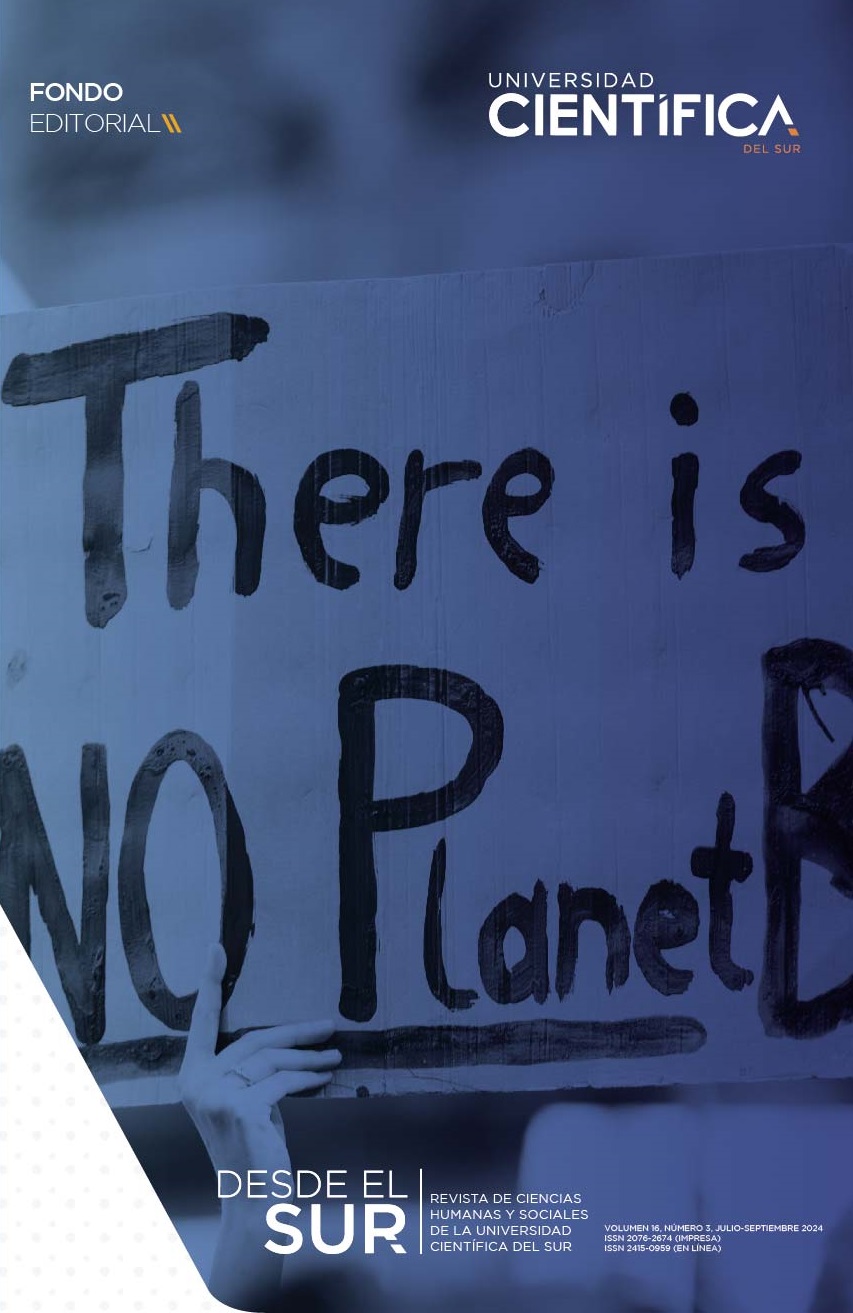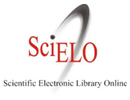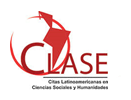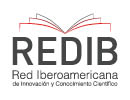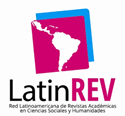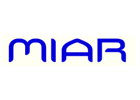Enfoques periodísticos y educación en El Comercio, Página/12 y El País en contexto prepandémico (2019)
DOI:
https://doi.org/10.21142/DES-1603-2024-0044Palabras clave:
Educación, Políticas públicas, framing periodísticoResumen
Este estudio analiza la representación de la educación y las políticas públicas en la prensa escrita y su impacto en la percepción ciudadana, enfocándose en El Comercio (Perú), Página/12 (Argentina) y El País (España), desde mayo a diciembre de 2019 (n = 260). Se utilizó el análisis de contenido y PCA para examinar la cobertura y los frames empleados. Se encontró que Página/12 se destaca por un enfoque intensivo en estos temas, ya que predominan los encuadres de atribución de responsabilidad y conflicto, los cuales indican una orientación editorial específica. En contraste, El País y El Comercio muestran un enfoque equilibrado y diverso, con variaciones notables en el uso de fuentes y presentación de noticias. Este análisis prepandémico subraya la influencia de los medios en la opinión pública y políticas educativas, y resalta la necesidad de una cobertura equilibrada y crítica en temas socialmente relevantes.
Descargas
Referencias
Ahmed, Y. A., Miller, V. W., Gebremeskel, H. H. y Ebessa, A. D. (2018). Mapping inequality in access to meaningful learning in secondary education in Ethiopia: Implications for sustainable development. Educational Studies, 45(5), 554-581. https://doi.org/10.1080/03055698.2018.1509777
Ansaldo, S. (2021). El campo del periodismo de educación en Chile: visiones y prácticas de periodistas y editores/as. Cuadernos.Info, (50), 113-135. https://doi.org/10.7764/cdi.50.27897
Antunes, F. y Viseu, S. (2019). Education governance and privatization in Portugal: Media coverage on public and private education. Education Policy Analysis Archives, 27, 125. https://doi.org/10.14507/epaa.27.4293
Barats, C. (2020). Dissemination of international rankings: characteristics of the media coverage of the Shanghai Ranking in the French press. Palgrave Communications, 6(77). https://doi.org/10.1057/s41599-020-0440-5
Bayas Aldaz, C. E., Rodriguez-Pomeda, J., Sandoval Hamón, L. A. y Casani, F. (2020). Understanding the university-sustainability link through media: A spanish perspective. Sustainability, 12(12), 4830. https://doi.org/10.3390/su12124830
Ben-Porath, E. N. y Shaker, L. K. (2010). News images, race, and attribution in the wake of Hurricane Katrina. Journal of Communication, 60(3), 466-490. https://doi.org/10.1111/j.1460-2466.2010.01493.x
Billaut, J. C., Bouyssou, D. y Vincke, P. (2010). Should you believe in the Shanghai ranking? Scientometrics, 84, 237-263. https://doi.org/10.1007/s11192-009-0115-x
Blackmore, J. y Thomson, P. (2004). Just «good and bad news»? Disciplinary imaginaries of head teachers in Australian and English print media. Journal of Education Policy, 19(3), 301-320. https://doi.org/10.1080/0268093042000207638
Bonilla, S. M., Ramírez, J. P. I., Barbecho, N. J. y Coronel, C. X. (2022). Análisis bibliométrico de la producción científica sobre calidad educativa en el Ecuador. Revista de Ciencias Sociales (Ve), XXVIII(Especial 5), 100-111. https://produccioncientificaluz.org/index.php/rcs/article/view/38148/42184
Cabalin, C. y Antezana, L. (2016). La educación en portada: la visualización de la política educacional en la prensa. Cuadernos.Info, (39), 195-207. https://doi.org/10.7764/cdi.39.914
Chong, D. y Druckman, J. N. (2007). Framing theory. Annual Review of Political Science, 10(1), 103-126. https://doi.org/10.1146/annurev.polisci.10.072805.103054
Dalal, K., Kalmatayeva, Z., Mandal, S., Ussatayeva, G., Shinn Lee, M. y Biswas, A. (2018). Adolescent girls’ attitudes toward female genital mutilation: A study in seven African countries. F1000Research, 7(343). https://doi.org/10.12688/f1000research.14142.1
Eliott, J., Forster, A. J., McDonough, J., Bowd, K. y Crabb, S. (2018). An examination of Australian newspaper coverage of the link between alcohol and cancer 2005 to 2013. BMC Public Health, 18(1). https://doi.org/10.1186/s12889-017-4569-0
D’Angelo, P. (2017). Framing: Media frames. En P. Rössler, C. A. Hoffner y L. van Zoonen (eds.), The International Encyclopedia of Media Effects (pp. 1-10). John Wiley & Sons.
Donsbach, W. (2004). Psychology of news decisions: Factors behind journalists’ professional behavior. Journalism, 5(2), 131-157. https://doi.org/10.1177/146488490452002
Entman, R. M. (1993). Framing: Toward clarification of a fractured paradigm. Journal of Communication, 43(4), 51-58.
Gagnon, J. (2018). Unreasonable rage, disobedient dissent: The social construction of student activists and the limits of student engagement. Learning and Teaching, 11(1), 82-108. https://doi.org/10.3167/latiss.2018.110105
Galioto-Allegra, C. y Flores-Gonzalez, L. M. (2021). Dimensiones epistemológicas en los sistemas de accountability de la calidad educativa: elementos para una interrogación crítica. Revista Brasileira de Educação, (26), e260079. https://doi.org/10.1590/s1413-24782021260079
Galioto, C. y Pérez Navarro, C. (2021). Transformations in the concept of quality at the beginning of the educational privatisation process in Chile: A historical study (1985-1990). Paedagogica Historica, 59(3), 528-545. https://www.tandfonline.com/doi/full/10.1080/00309230.2021.1905008
George Reyes, C. E. (2020). Pruebas estandarizadas y calidad de la educación en México, sexenio 2012-2018. Revista Universidad y Sociedad, 12(4), 418-425. http://scielo.sld.cu/pdf/rus/v12n4/2218-3620-rus-12-04-418.pdf
Gitlin, T. (1980). The whole world is watching. Mass media in the making and unmaking of the new left. University of California Press.
Goffman, E. (1974). Frame analysis: An essay on the organization of experience. Harvard University Press.
Hepp, A. (2013). Cultures of mediatization. Polity Press.
Jacomini, M. A., Girotto, E. D., Barbosa, A. y Stoco, S. (2021). Política educacional na rede estadual paulista e qualidade do ensino sob a Nova Gestão Pública, 1998 a 2018. Arquivos Analíticos de Políticas Educativas, 30(27), 1-34. https://doi.org/10.14507/epaa.30.6465
Lash, C. L., Frye, A. y Carter, P. L. (2020). Research and other forms of rhetoric in media coverage of student achievement. Teachers College Record, 122(9), 1-32. https://doi.org/10.1177/016146812012200901
Larkham, P. J. y Manns, S. (2002). Plagiarism and its treatment in Higher Education. Journal of Further and Higher Education, 26(4), 339-349. https://doi.org/10.1080/0309877022000021748
Lecheler, S. y de Vreese, C. H. (2018). News framing effects. Taylor & Francis Group.
Lencina, R., Pereyra, R. y Alonso, E. (2023). Sobre la «arena de lucha» mediática en torno a las poblaciones indígenas en Argentina. Un abordaje interdisciplinario de encuadres informativos. Desde el Sur, 15(2). https://doi.org/10.21142/DES-1502-2023-0025
Lindenberg, S. y Steg, L. (2007). Normative, gain and hedonic goal frames guiding environmental behavior. Journal of Social Issues, 63(1), 117-137. https://doi.org/10.1111/j.1540-4560.2007.00499.x
Lozano, A. (2011). Latina/o culture centers: Providing a sense of belonging and promoting student success. En L. D. Patton (ed.), Culture centers in Higher Education. Perspectives on identity, theory, and practice (pp. 3-25). (1.ª ed.). Routledge. https://doi.org/10.4324/9781003443971
Mateu-Luján, B. (2021). La educación musical en España dentro del currículo obligatorio de educación secundaria. Estudio comparado entre comunidades autónomas. Revista Española de Educación Comparada, (37), 338-354.
Mora Rodríguez, J. J. y Estrada Nates, D. (2021). La relación entre el desarrollo de los municipios y la puntuación en matemáticas: un caso aplicado para Colombia. Revista de Métodos Cuantitativos para la Economía y la Empresa, 32, 112-129. https://www.upo.es/revistas/index.php/RevMetCuant/article/view/4465/5258
McCombs, M. E. y Shaw, D. L. (1972). The agenda-setting function of mass media. Public Opinion Quarterly, 36, 176-187.
McLellan, V. y Shackleton, C. M. (2019). The relative representation of ecosystem services and disservices in South African newspaper media. Ecosystems and People, 15(1), 247-256. https://doi.org/10.1080/26395916.2019.1667442
McNair, B. (2003). An introduction to political communication. (3.ª ed.). Routledge.
Mobley Jr., S. D. y Johnson, J. M. (2019). «No pumps allowed»: The «problem» with gender expression and the Morehouse College «Appropriate Attire Policy». Journal of Homosexuality, 66(7), 867-895. https://doi.org/10.1080/00918369.2018.1486063
Parcel, T. L. y Taylor, A. J. (2015). The end of consensus. Diversity, neighborhoods, and the politics of public school assignments. UNC Press Books.
Pasirayi, P. (2017). The media and cultural productions in the context of the «third Chimurenga» in Zimbabwe, 2000 to 2005. [Tesis doctoral, University of Oxford]. https://ora.ox.ac.uk/objects/uuid:ff78a1ca-3e63-461e-8620-4da46c84e8f6
Pat-Horenczyk, R., Bergman, Y. S., Schiff, M., Goldberg, A., Cohen, A., Leshem, B., Jubran, H., Worku-Mengisto, W., Berkowitz, R. y Benbenishty, R. (2021). COVID-19 related difficulties and perceived coping among university and college students: The moderating role of media-related exposure and stress. European Journal of Psychotraumatology, 12(1). https://doi.org/10.1080/20008198.2021.1929029
Piazza, P. (2014). The media got it wrong! A critical discourse analysis of changes to the educational policy making arena. Education Policy Analysis Archives, 22(36). https://doi.org/10.14507/epaa.v22n36.2014
Pizmony-Levy, O. y Torney-Purta, J. (2018). How journalists and researchers communicate results of international large-scale assessments. Cadmo, 26(1), 51-65. https://ouci.dntb.gov.ua/en/works/40OWxvA7/
Ravela, P. (2003). ¿Cómo aparecen los resultados de las evaluaciones educativas en la prensa? PREAL.
Saenz, L. P. y Moses, M. S. (2010). Deliberating about affirmative action: Linking education policy research and the media. American Journal of Education, 116(2), 263-287. https://doi.org/10.1086/649494
Santa Cruz, E. (2016). Mediatización de las políticas educativas en Chile: El discurso de los diarios La Tercera y El Mercurio sobre la Ley General de Educación (2006-2009) [Tesis doctoral, Universidad de Granada]. https://digibug.ugr.es/handle/10481/43557
Sellar, S. y Lingard, B. (2013). Looking East: Shanghai, PISA 2009 and the reconstitution of reference societies in the global education policy field. Comparative Education, 49(4), 464-485. https://doi.org/10.1080/03050068.2013.770943
Shahjahan, R. A., Bylsma, P. E. y Singai, C. (2022). Global university rankings as «sticky» objects and «refrains»: affect and mediatisation in India. Comparative Education, 58(2), 224-241. https://doi.org/10.1080/03050068.2021.1935880
Shine, K. y O’Donoghue, T. (2013). Teacher representation in news reporting on standardised testing: A case study from Western Australia. Educational Studies, 39(4), 385-398. https://doi.org/10.1080/03055698.2013.767186
Sjøberg, S. (2018). The power and paradoxes of PISA: Should Inquiry-Based Science Education be sacrificed to climb on the rankings? Nordic Studies in Science Education, 14(2), 188-202. https://journals.uio.no/nordina/article/view/6185/5249
Semetko, H. y Valkenburg, P. (2000). Framing European Politics: A content analysis of press and television news. Journal of Communication, 50(2), 93-109. https://doi.org/10.1111/j.1460-2466.2000.tb02843.x
Snow, D. A. y Benford, R. D. (1988). Ideology, frame resonance, and participant mobilization. International Social Movement Research, 1(1), 197-217.
Snow, D., Soule, S. A. y Kriesi, H. (Eds.). (2004). The Blackwell Companion to Social Movements. Blackwell Publishing.
Sumner, D. E. (1995). Nashville, nonviolence, and the newspapers: The convergence of social goals with news values. Howard Journal of Communications, 6(1-2), 102-113. https://doi.org/10.1080/10646179509361687
Yumiya, Y., Murakami, M., Takebayashi, Y., Suzuki, S. y Ohira, T. (2019). Unreliable information as a risk factor for worse mental fatigue among residents in Fukushima after the Nuclear Power Station accident. The Tohoku Journal of Experimental Medicine, 248(4), 261-272. https://doi.org/10.1620/tjem.248.261
Winburn, J., Winburn, A. y Niemeyer, R. (2014). Media coverage and issue visibility: State legislative responses to school bullying. The Social Science Journal, 51(4), 514-522. https://doi.org/10.1016/j.soscij.2014.04.004
Descargas
Publicado
Número
Sección
Licencia

Esta obra está bajo una licencia http://creativecommons.org/licenses/by-nc-sa/4.0/

